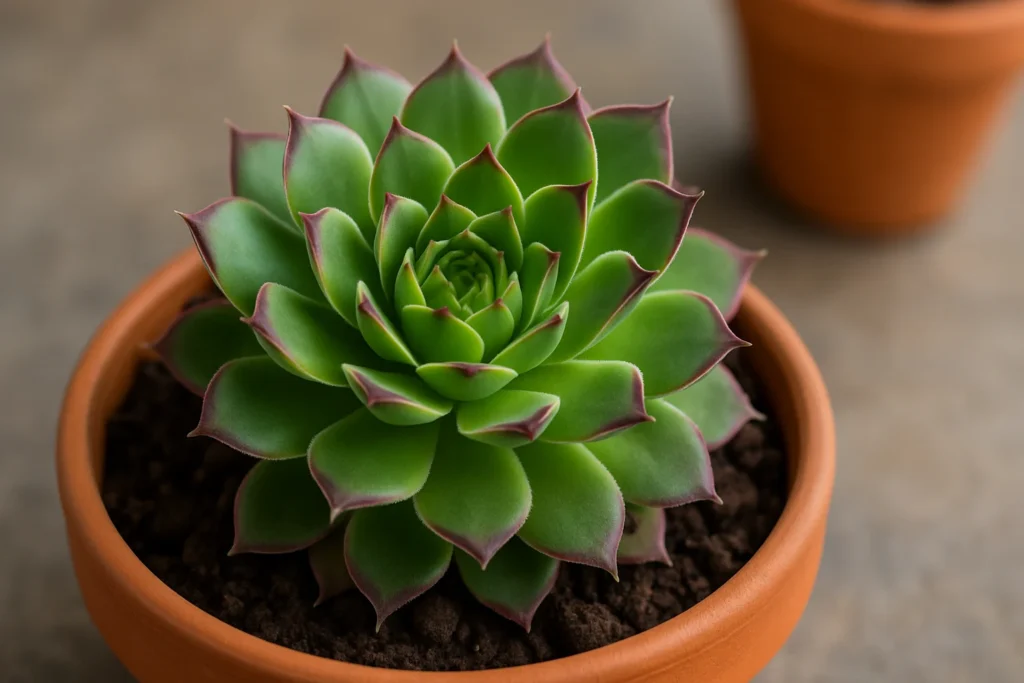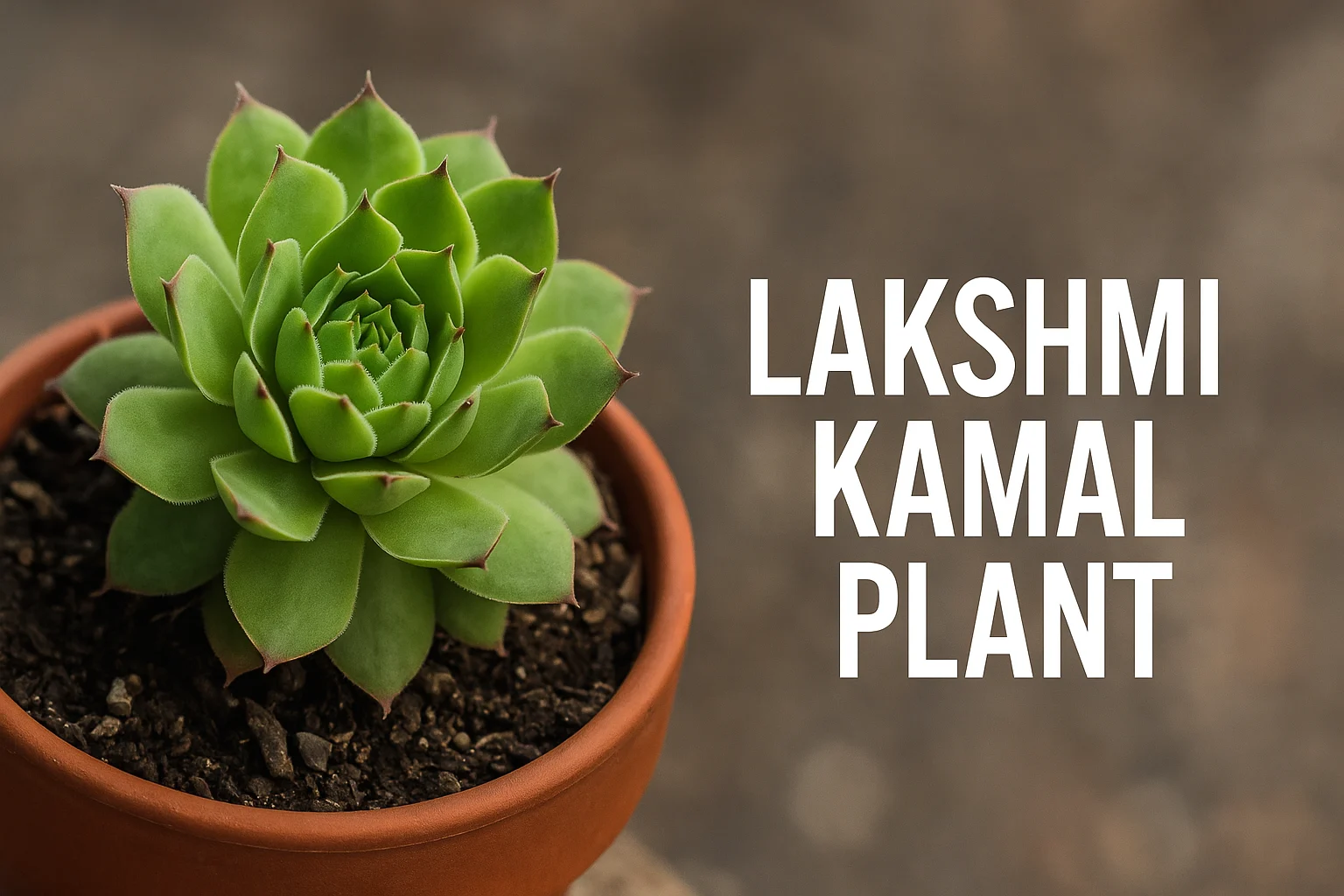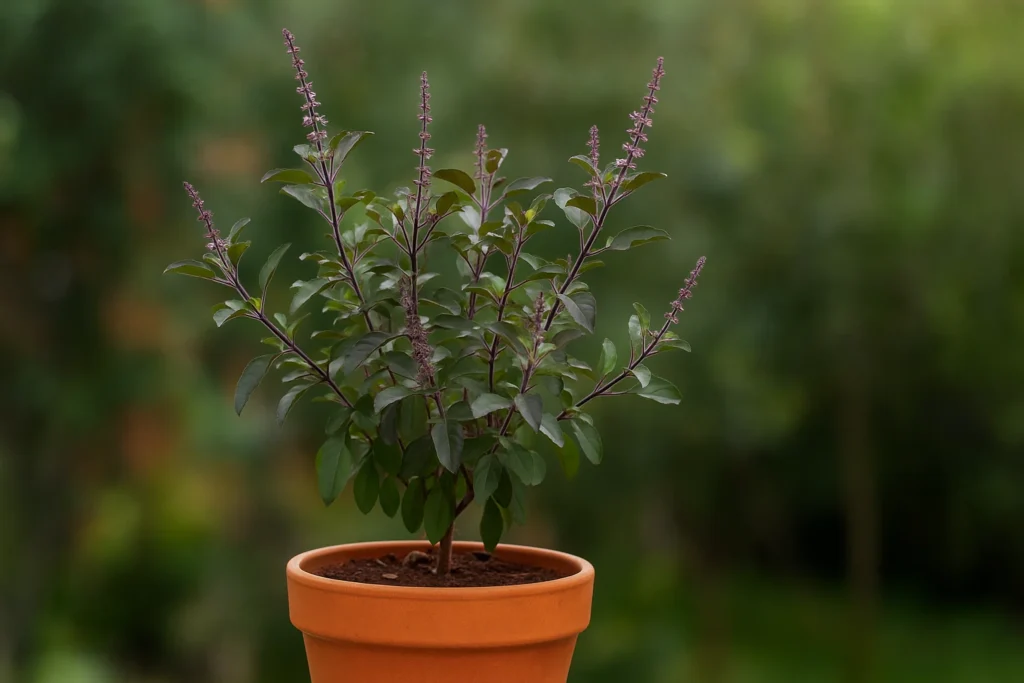There’s something undeniably special about the Lakshmi plant. With its symmetrical rosette-shaped leaves and spiritual significance, this charming succulent has become a favorite among plant lovers. Whether you’re someone who keeps plants for their aesthetic appeal or their auspicious energy, the Lakshmi Kamal plant deserves a place in your garden or home.
In this guide, we’ll explore everything you need to know about this green gem — from how to grow it, to its benefits and spiritual connections. So, grab a cup of tea and let’s explore this beautiful plant together.
What is Lakshmi Kamal Plant?
The Lakshmi Kamal plant, also known as Sempervivum Green, is a compact, evergreen succulent that’s admired for its symmetrical rosette pattern. The name is inspired by Goddess Lakshmi, the Hindu deity of wealth and prosperity, and “Kamal,” meaning lotus — hence it’s often called the Lakshmi lotus plant.
This unique combination of beauty and symbolism makes the Lakshmi Kamal flower a popular gift during festivals and a staple in indoor gardens.
Spiritual Significance of Lakshmi Kamal
The Lakshmi Kamal plant isn’t just about good looks. In Indian culture, it’s believed to bring wealth, peace, and harmony to the household. According to Vastu Shastra and Feng Shui, placing the Lakshmi Kamal in the northeast corner of your home or workplace can attract prosperity and positive energy.
Its connection with Goddess Lakshmi makes it especially popular during Diwali and other religious ceremonies, where it’s often placed alongside idols and offerings.
How to Grow Lakshmi Kamal Plant at Home

Want to welcome prosperity and greenery together? Here’s how you can grow the Lakshmi plant with ease. This succulent is extremely beginner-friendly. It thrives in well-drained soil and needs a sunny spot — preferably near a window or balcony. If you’re growing it outdoors, a place with indirect sunlight works well.
Basic Requirements:
- Sunlight: At least 3–4 hours of indirect sunlight daily.
- Soil: Use cactus or succulent soil mix with good drainage.
- Water: Water only when the top layer feels dry. Avoid overwatering.
- Pot: Choose a pot with drainage holes to prevent root rot.
If you’re already familiar with hardy succulents like the Broken Heart Plant, you’ll find the Lakshmi Kamal even easier to maintain.
Lakshmi Kamal Plant Care Tips
Taking care of the Lakshmi Kamal plant doesn’t require expert-level gardening skills. Still, a few thoughtful steps can keep your plant happy and thriving.
Care Guidelines:
- Avoid overwatering: Like most succulents, the Lakshmi Kamal stores water in its leaves. Too much water can lead to fungal diseases.
- Keep away from frost: If you’re in a colder region, bring the plant indoors during winters.
- Clean the leaves: Dust on leaves can block sunlight. Wipe them occasionally with a soft cloth.
- Use neem oil: For natural pest protection, spray diluted neem oil every few weeks.
For those who love low-maintenance greenery like the Marikolunthu, this plant is a joy to own.
Lakshmi Kamal Plant Benefits
Now let’s talk about why this plant is more than just a pretty face.
1. Auspicious Symbolism
The biggest benefit of the Lakshmi plant is its spiritual significance. It’s believed to attract financial growth and harmony, especially when placed in the right direction at home.
2. Air Purifying Qualities
Although not as robust as larger indoor plants, the Lakshmi Kamal still contributes to improving indoor air quality by absorbing minor toxins and increasing oxygen levels.
3. Great for Gifting
The plant makes for a meaningful gift, especially during housewarming ceremonies, weddings, or Diwali. It combines beauty with blessings, making it a heartfelt present.
4. Compact and Decorative
Due to its small size and symmetrical form, it can easily fit on desks, side tables, or window sills, just like the elegant Black Turmeric Plant or Allamanda Blanchetii.
Propagating Lakshmi Plant
If you’re wondering how to multiply this beauty, propagation is simple and satisfying. The plant produces small offshoots, or baby rosettes, that can be carefully removed and replanted. Here’s how to do it:
- Gently separate the rosette from the main plant using a clean blade.
- Allow it to callous (dry out) for a day or two.
- Plant it in a new pot with fresh succulent soil.
- Water lightly after 2–3 days and keep in indirect sunlight.
This propagation method is similar to how gardeners handle other succulents like Coconut Flower varieties that spread via offshoots or cuttings.
Is Lakshmi Plant a Tree or a Flower?
Though it’s often referred to as the Lakshmi Kamal tree, it’s not a tree in the traditional sense. It’s a succulent plant with floral-like rosettes that resemble a lotus — hence the name Lakshmi Kamal flower. So, if you’re expecting a large, woody plant, this may surprise you. Instead, it’s a compact, ornamental succulent that looks like a flower but functions like a hardy houseplant.
Where to Place Lakshmi Kamal Plant at Home
Location matters when it comes to Vastu energy. Here are a few placement tips:
- Northeast or East-facing window: Ideal for spiritual energy.
- Living Room or Puja Room: Encourages prosperity.
- Office Desk: Helps improve focus and invite success.
Also, if you live in an apartment and want added safety for your balcony plants, consider installing Invisible Grille. It not only protects your space but keeps your greenery safe without blocking the view.
Final Thoughts
The Lakshmi Kamal plant is the perfect blend of beauty, symbolism, and low-maintenance care. Whether you believe in its spiritual vibes or just love unique plants, adding it to your home is a decision you won’t regret. From its divine connections to its easy-growing nature, it’s a joy for beginners and experienced gardeners alike.
And if you’re planning to build a peaceful green corner, don’t forget the basics — a good soil mix, proper sunlight, and a little love. And of course, check out the Name Things That Gardeners Need to make your plant-parent journey even smoother.













